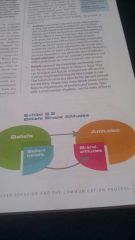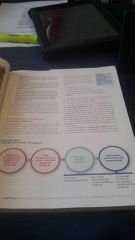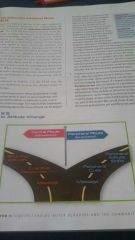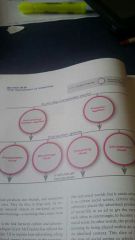![]()
![]()
![]()
Use LEFT and RIGHT arrow keys to navigate between flashcards;
Use UP and DOWN arrow keys to flip the card;
H to show hint;
A reads text to speech;
47 Cards in this Set
- Front
- Back
|
consumer behavior |
activities and decision processes directly involved in obtaining, consuming, and disposing of products and services |
|
|
need state |
psychological state arising when one's desired state of affairs differs from one's actual state of affairs |
|
|
consumer decision making process |
need recognition information search and alternative evaluation purchase post-purchase use and evaluation |
|
|
functional benefits |
benefits that come from a product's objective performance characteristics |
|
|
emotional benefits |
benefits not typically found in a product's tangible features or objective characteristics |
|
|
internal search |
search for product information that draws on personal experience and prior knowledge |
|
|
consideration set |
subset of brands form a product category that becomes the focal point of a consumer's evaluation |
|
|
external search |
gathering product information by visiting retail stores to examine alternatives, seeking input from friends and relatives, or perusing professional product evaluations |
|
|
evaluative criteria |
product attributes or performance characteristics on which consumers base their product evaluations |
|
|
customer satisfaction |
good feelings that come from a favorable post-purchase experience |
|
|
cognitive dissonance |
anxiety or regret that lingers after a difficult decision |
|
|
involvement |
degree of perceived relevance and personal importance accompanying the choice of a product or service in a particular context |
|
|
extended problem solving |
decision making mode in which inexperienced but highly involved consumers go through a deliberate decision making process |
|
|
limited problem solving |
decision making mode in which relatively inexperienced and uninvolved consumers are not systemic about decisions |
|
|
habit |
decision making mode in which consumers buy a single brand repeatedly as a solution to a simple consumption problem |
|
|
variety seeking |
decision making mode in which consumers switch their selection among various brands in a category in a random pattern |
|
|
Brand loyalty |
decision making mode in which consumers repeatedly choose to buy the same brand of a product to fulfill a specific need |
|
|
attitude |
overall evaluation f any object, person, or issue varies along a continuum, such as favorable to unfavorable or positive to negative |
|
|
Brand attitudes |
summary evaluations that reflect preferences for various products or brands |
|
|
salient beliefs |
the few beliefs that are the critical determinants of an attitude |
|
|
how beliefs shape attitudes |

|
|
|
multi attribute attitude models (MAAMs) |
framework and set of procedures for collecting information from consumers to assess their salient beliefs and attitudes about competiting brands |
|
|
4 MAAMs components |
evaluative criteria: attributes or performance characteristics importance of weights: priority that a particular evaluative criteria receives consideration set: the group of brands represents the focal point of the consumer's consideration beliefs: the consumer's knowledge and feelings about various brands |
|
|
using MAAMs analysis |

|
|
|
cognitive consistency |
maintenance or a system of beliefs and attitudes over time |
|
|
advertising clutter |
volume or similar ads for products or services that presents an obstacle to brand promotion |
|
|
stages before a brand message can have its intended effect |
consumer must: 1) pay attention to the messae 2) comprehend the message 3) accept the message as intended 4) retain the message until it is needed for a purchase decision |
|
|
selective attention |
processing of only a few messages among many encountered |
|
|
cognitive response |
thoughts that occur at the exact moment when beliefs and attitudes are being challenged by a message |
|
|
elaboration likelihood model (ELM) |
Social psychological model of the response to a persuasive communication expressing the response in terms of motivation and ability |
|
|
peripheral cues |
features of an advertisement other than the actual arguments about the brand's performance |
|
|
ELM 2 routes to attitude change |

|
|
|
meaning |
what a brand message intends or conveys |
|
|
culture |
a group's characteristic ways of behaving |
|
|
types of cultural expression |
values rituals stratification |
|
|
rituals |
repeated behaviors that affirm, express, and maintain cultural values |
|
|
stratification (social class) |
individuals' relative standing in a social system as produced by systematic inequalities |
|
|
taste |
a generalized set or orientation to consumer preferences |
|
|
3 variables in social class |
income occupation education |
|
|
cultural capital |
the value that cultures place on certain consumption practices |
|
|
intergenerational affect |
choose of products based on what was set in the consumer's childhood household |
|
|
life stage |
circumstance that changes a family's consumption patterns |
|
|
celebrity |
sociological category of famous individuals who shape identify for others |
|
|
community |
group of people loosely joined by a common characteristic or interest |
|
|
Brand community |
group of consumers who feel a commonality and shared purpose grounded in or attached to consumer good or service |
|
|
advertising and social rift (revolution) |
consumers sometimes use their consumption choices to stake out a revolution (1960s) |
|
|
movement of meaning |

|

